A Labor Day Hike to Loon Lake
A popular walking loop leads from the Chinook Campground in the Payette National Forest, along the banks of the Sesech River to the majestic Loon Lake. We woke up early on the Sunday of Labor Day weekend to tackle the hike, which impressed us not only with its beauty, but with a fascinating piece of history hidden within the woods.

For the first few miles of the hike, we followed the Secesh River, shining brilliantly in the morning light. It’s pronounced “SEE-shesh”, with its roots in the word “secessionist”. After the Civil War, gold prospectors from all over the nation settled in nearby Warren. Conflict inevitably arose between the former Union and Confederate loyalists, and tribal lines were drawn. Northerners stayed in a part of Warren which they coined Washington, while Southerners settled across the river, henceforth known as the Secesch.

In February of 1943, a B-23 Bomber got lost in the snowy mountains of Idaho. Short of fuel, the eight-man crew searched desperately for a place to touch down. In the nick of time, they spotted Loon Lake: frozen over and just spacious enough to attempt a landing. The plane skidded across the ice and crashed into the trees on the lake’s southern shore.
Everyone survived the rough landing, but they weren’t yet out of danger. Completely lost in the wild back-country of Idaho, they had no means of communicating their location, or any idea as to where they were. For fifteen days, they held on, reduced to eating bark, leaves and squirrel. Lucikly, a commercial pilot from Warren eventually discovered the wreckage, and was able to rescue the crew, all eight of whom survived.
The wreckage from the Chinook Bomber is still in the woods, near Loon Lake. After 69 years, it’s more intact than I would have believed. We walked around the bomber, and poked our heads into the wheel well and cockpit. A stirring testament to man’s will to survive.
The trek back to the car was long; five miles through burnt forest, with Labor Day traffic to contend with. This is a popular trail for dirt-bikes, which hindered us from truly enjoying the scenery. Every time a bike blasted by, we’d be suffocated for a couple minutes by the dust it kicked up. It was the wrong weekend to be on this trail; my eyes were sore, and I was coughing up dirt by the time we arrived back at the car.
Locations: Chinook Campground Trailhead | B-23 Bomber Remains
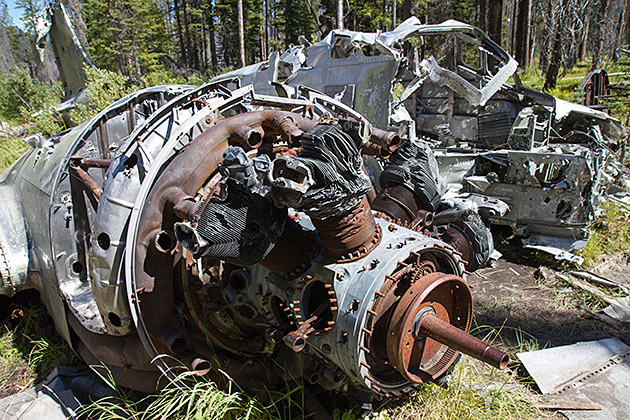
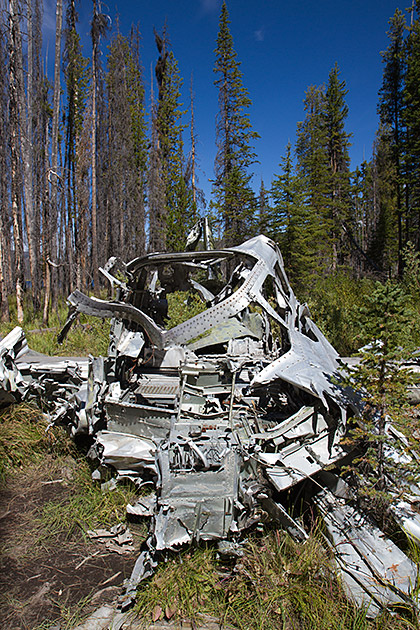
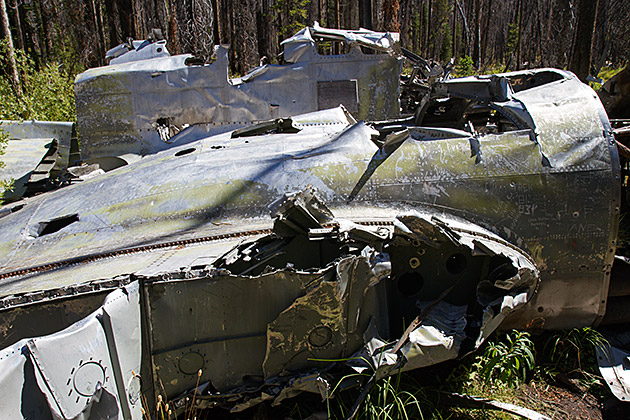
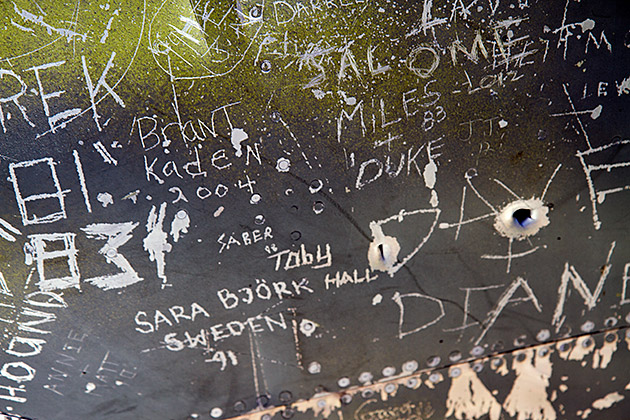
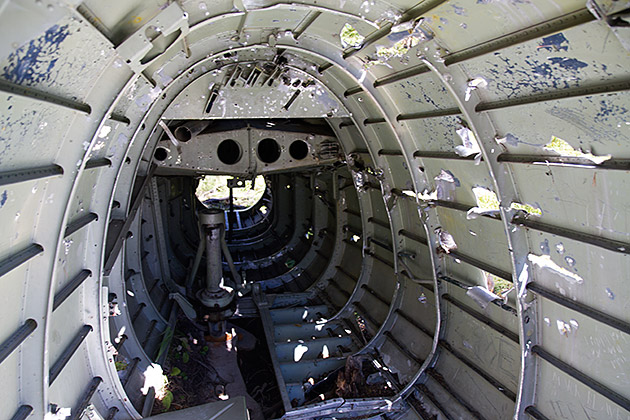
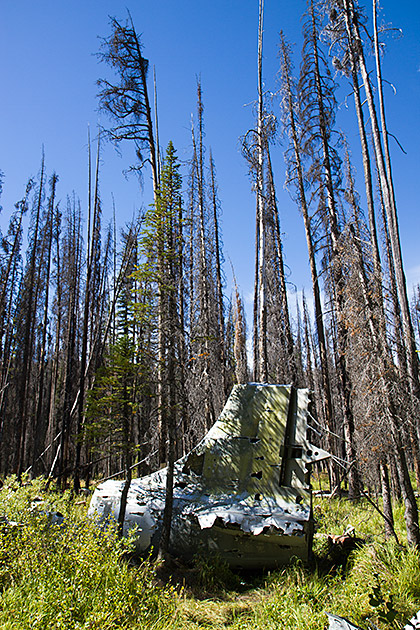
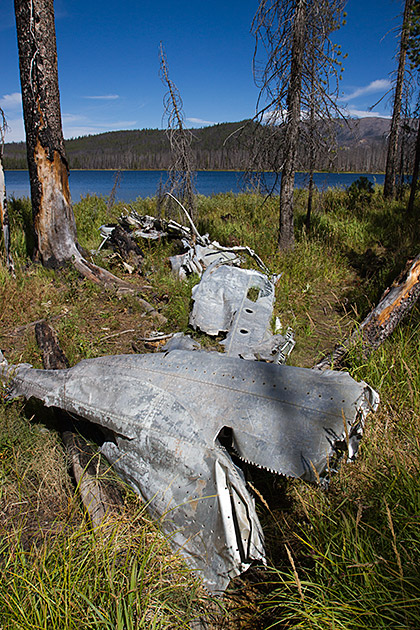

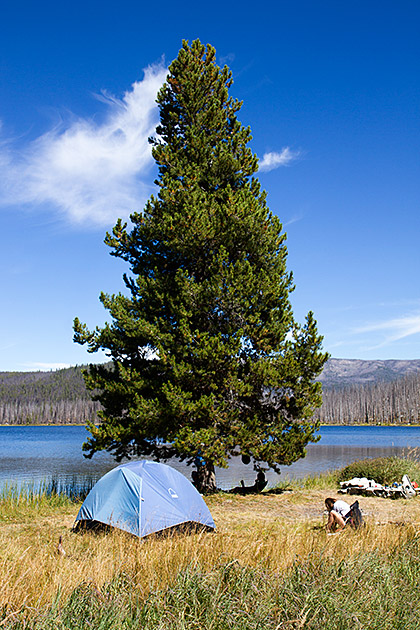
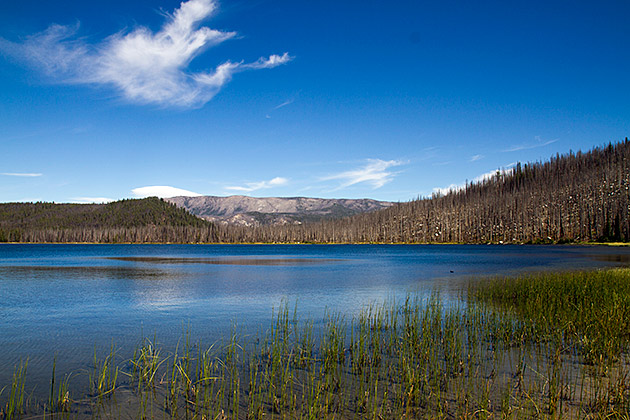
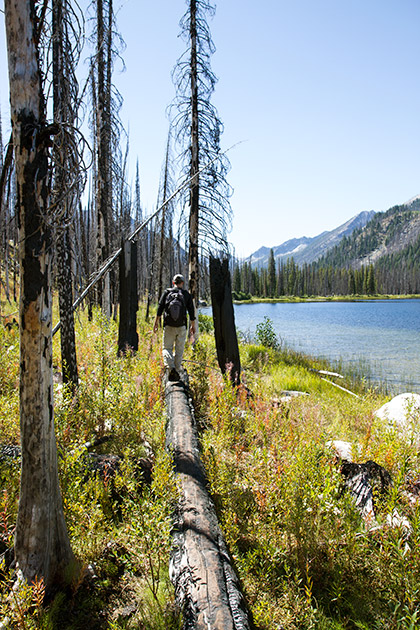

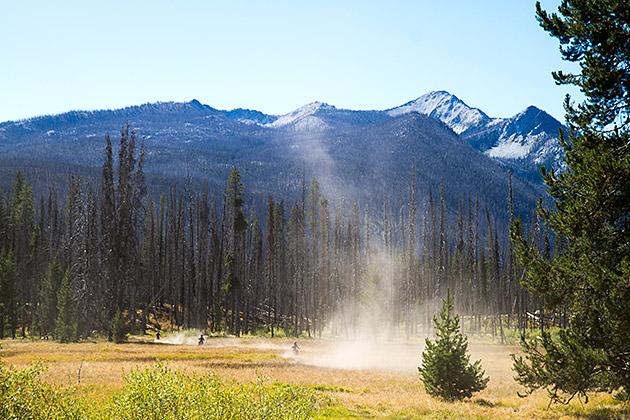
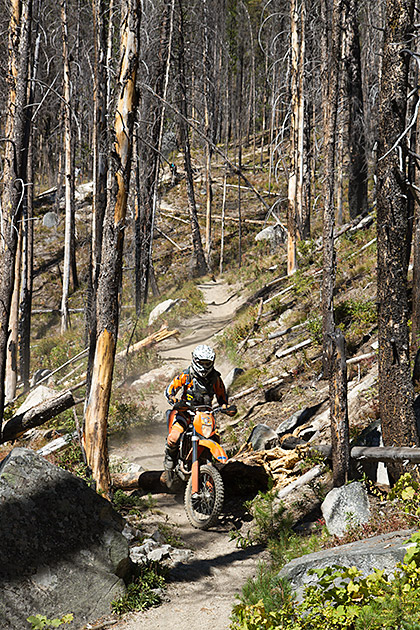
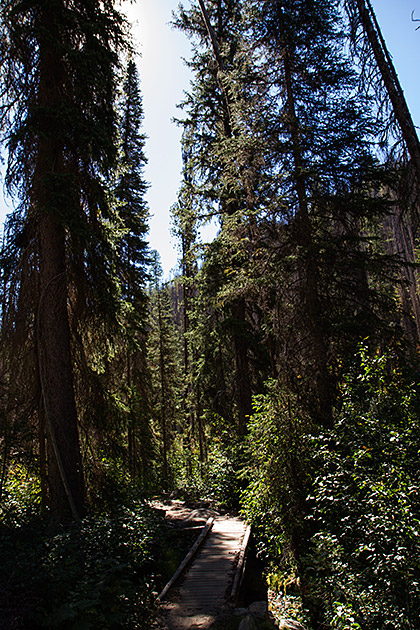
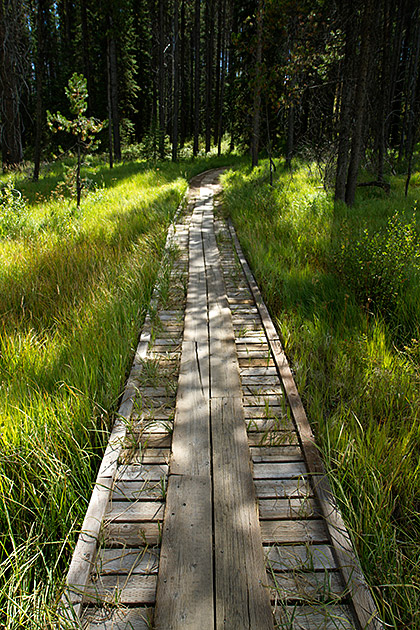
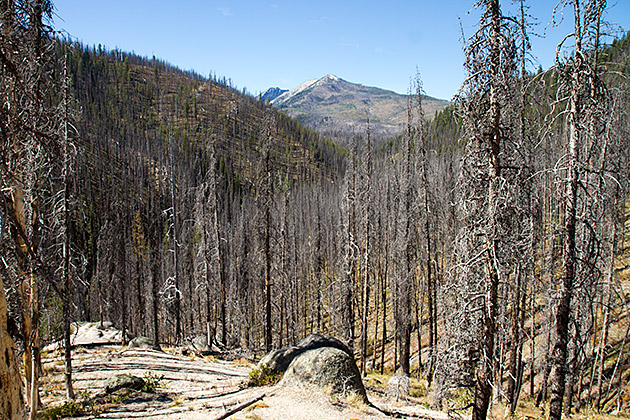
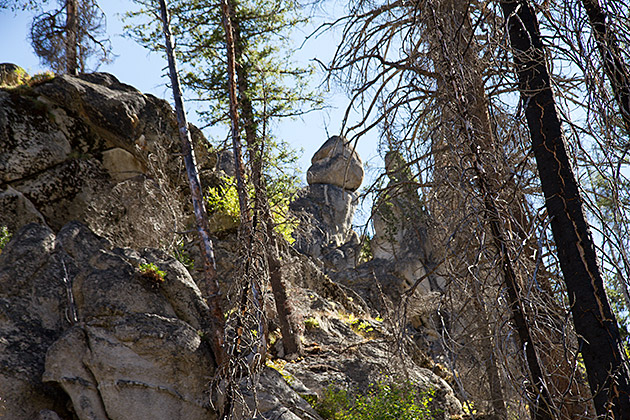

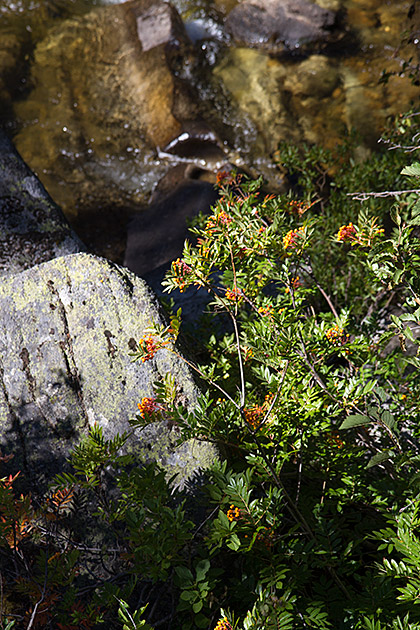

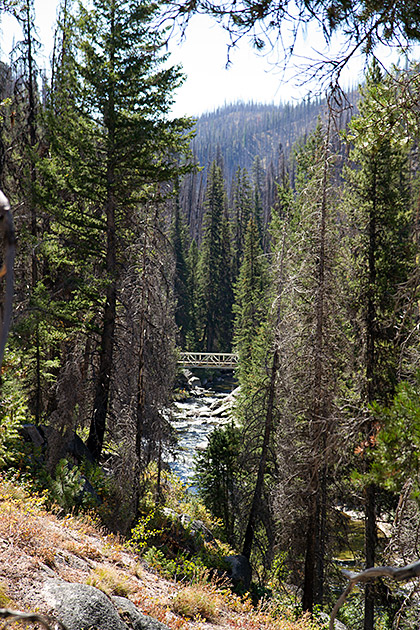
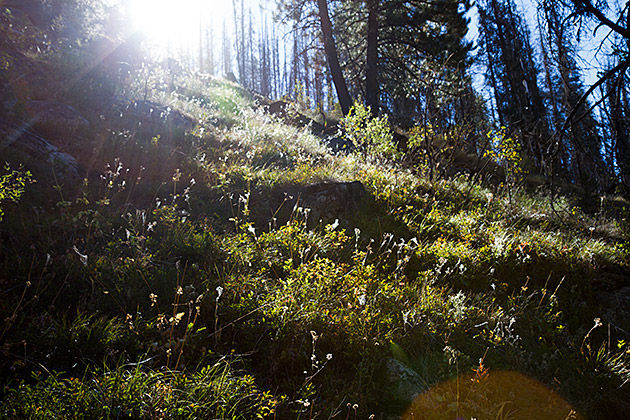
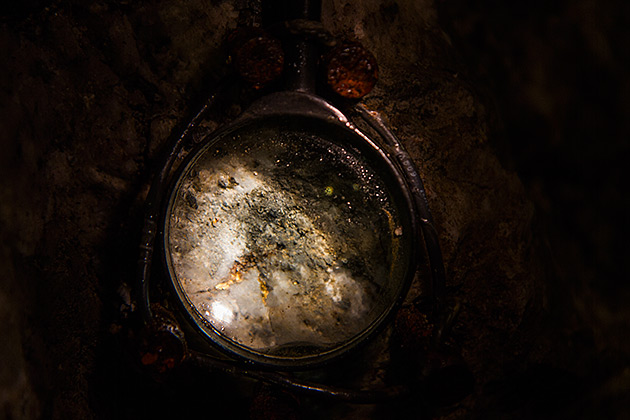

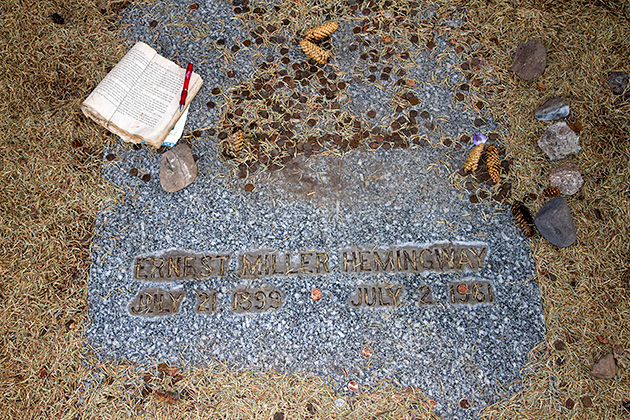

Guys,Just found your site. Interesting, and I’m enjoying the pictures. We’ve been up in McCall since 2001 and really like the area. Like you’ve discovered, there are many places to see and a lot of dusty miles to travel. Suggestions would include: Yellow Pine/Stibnite; Warren/Thunder Mtn; Salmon River; Whitebird; Hells Canyon; Pittsburgh Landing; Kleinschmidt grade; Seven Devils; OX Ranch area; etc; etc.Enjoy!-Mike
Hey Mike, thank you for the comment and for the all the tips. Most of them we haven’t heard about yet. Will check them out! Hope you are enjoying our blog.
The following was taken from an Idaho Statesman article published 01/29/93.
“Bomber Crash 50 Years Ago Began Ordeal For 8
Crewmen”by Mark Carnopis Fifty years ago today, eight crewmen
of a bomber that crashed in northern Idaho began an odysseyof survival that
continued for more than two weeks. Everyone aboard the B-23 Dragon
bomber, which veered off course in a snowstorm, survived theJanuary 29,
1943, crash in the Payette National Forest about 15 miles northeast of McCall.
Five days later, three of the crewmen decided to hike out for help. On
February 13, a Cascadebush
pilot named Penn Stohr spotted the wreckage and the five men there. They
were rescued thenext day. On Feb. 16, the three men who had left the
crash site found a Civil Conservation Corps camp.One of them stayed there,
while the other two hiked to a ranger station, where they phoned
forhelp.They had traveled 42 miles in heavy snow before being rescued.
At the height of the search, the entire Second Air Force, which included
the Army Air Corps fromthe entire Northwest, joined private pilots in
scouring three states. Efforts to contact one of the crewmen, Edward
Freeborg, 69, of Portland, Oregon, wereunsuccessful Thursday. But
Boise aviation historian Lowell Thompson provided a copy of a nine-page report
of the crashpurportedly written by Freeborg. Using that report, news stories
of the crash and a 1991newspaper interview with Freeborg, a Statesman
reporter was able to compile the followingaccount of the incident, which
made headlines across the nation: The Army Air Corps bomber, which was
used for coastal patrol and in training missions, was enroute from Tonopah,
Nev., to McChord Field in Tacoma, Washington, the morning of Jan. 29when it
got lost in a blinding snowstorm and ended up over Idaho. Efforts to
find a suitable landing site in the rugged terrain were unsuccessful. With gas
running low,the crew decided to try an emergency landing on Loon Lake, near
Upper Payette Lake. The bomber hit the far shore, sawing off 20-inch
trees for about 100 yards. Both wings weresheared off and the nose was
smashed, but the fuselage remained intact. The only injuries were abroken
leg and a severely cut hand. The crew searched the plane and found two
12-gauge shotguns and some emergency rationschocolate vitamin bars. The
first night, they took turns gathering wood and sleeping on green
pineboughs. Freeborg said attempts to hike out of the area or make
themselves more visible from the air weredifficult. “The future was
none too bright for us, with no food… half starved, half frozen and a
regularblizzard going on about us. This continued for about 10 days…
covering every smoke signal wecould make, and making it terribly cold and in
general hampering all of our efforts in letting theoutside world knowing of
our whereabouts,” he wrote. He said those who tried to go looking for
help “met with failure, due to exceptionally deep snow,with men in each case
sinking into snow up to their waists and sometimes so deep they had to
helpeach other out of the holes they had made.” On Feb. 1, Freeborg
was able to fix the radio and send a message, which included a
wronglocation: “Crew intact, need food, clothing and an axe. At the south
end of a lake near Boise,Idaho.” The night of Feb. 2, Freeborg and
two other crewmen decided they would hike out for help. Theyleft the next
morning with small pieces of the chocolate, a shotgun and canteens. “We
hiked across the lake and up to the top of the mountain to look and see what
type of territorywe were going to have to climb out of,” Freeborg wrote.
“Believe me, that was the mostdisappointing sight I had ever hoped to see.
Hills, hills and more hills in every direction. Believe me,I firmly believed
that we looked in the face of death.” The first several days, all they
ate were chocolate and one squirrel, which Freeborg shot. The fifthday, they
found a small cabin with three cots and some food. They also saw a sign that
said McCallwas 25 miles away. They decided that two of them would keep
hiking on the road. On Feb. 13, Penn Stohr spotted the plane wreckage
and crewmen while delivering mail by air. Hecould not land on the frozen
lake, but came back the next day with a ski plane and rescued the
fivecrewmen still with the bomber. Stohr died in 1957 at the age of
54, his son, Dan Stohr, said in an interview Thursday from Boise.He died in
a plane crash while doing aerial spraying in Montana. Dan Stohr said his
father never said much about the crash and rescue. “He was a very modest
guy.Usually what I heard is what I read. He would just have assumed to stay
out of the limelight.” Back in the wilderness, Freeborg and the others
had found a camp mess hall and an Idaho NationalForest booklet that included
a map. Freeborg and another crewman decided to look for a rangerstation that
the map indicated was nearby. They followed telephone lines to the station,
where theytelephoned for help. Fifty years later, remnants of the
airplane remain, and it still is a popular site for hikers.
So I really enjoyed reading about my state. I was raised on the back side of Hayden lake which was twelve miles from town. If you get a chance visit the Clark house on Hayden lake. Thank you and enjoy!